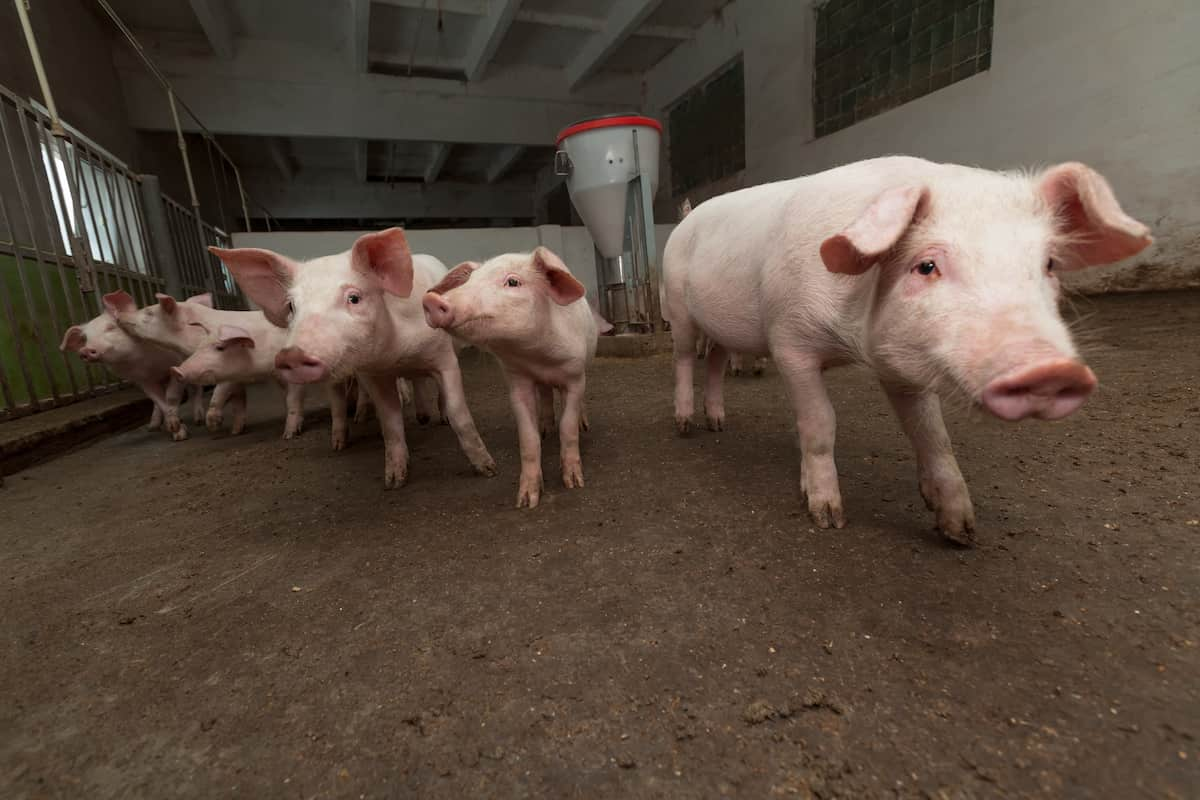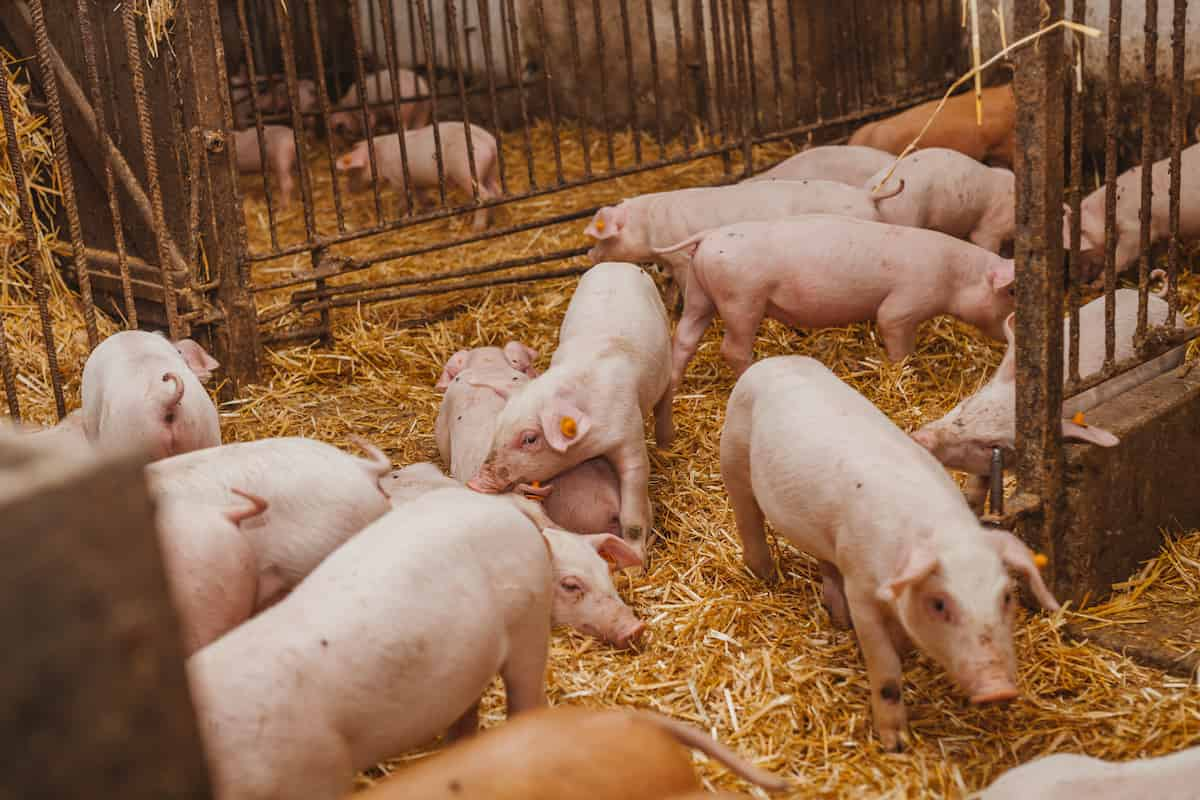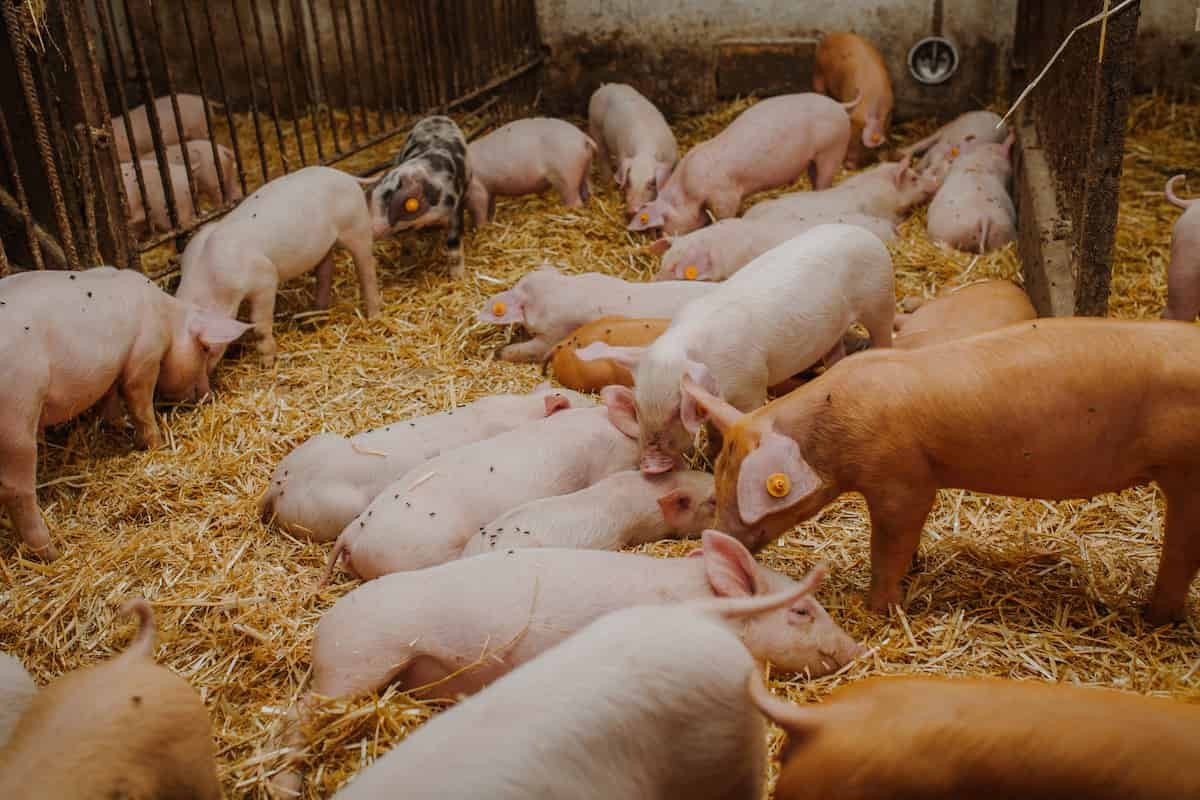Pork farming is an exciting and potentially lucrative business in the USA. With the high demand for pork products, starting a pork farming business can be a smart investment. However, like any other business, it requires proper planning and execution to ensure success. This guide will provide a step-by-step guide to starting a pork farming business in the USA, including a business plan and actionable steps for beginners. Below we learn Pork farming requirements and Pig farming Business plans.

How to Start Pork/Hog/Pig Farming in the USA
Research and Planning
The first step to starting a pork farming business is conducting thorough research and planning. This involves evaluating the demand for pork products, identifying potential competitors, and understanding the regulations and requirements for starting a pig farming business in your area. You must decide on the type of pork farming operation you want to start. There are three types of pig farming systems: intensive, free-range, and organic. Each system has pros and cons, so choosing the one that best suits your goals and resources is essential.
Create a Business Plan
After conducting research, the next step is to create a business plan. Your business plan should include the following sections:
- Executive Summary: This is an overview of your business plan that highlights the key points of your plan.
- Business Description: This section should describe your pork farming business, including your business model, goals, and objectives.
- Market Analysis: This section should analyze the demand for pork products, including the current market trends, competitors, and potential customers.
- Marketing Strategy: This section should describe how you plan to market and promote your pork products.
- Operations and Management: This section should outline your pig farming operation, including the equipment, facilities, and management team.
- Financial Plan: This section should outline your projected income and expenses, including startup costs, operating expenses, and revenue projections.
Obtain Licenses and Permits
Before starting your pig farming business, you must obtain the necessary licenses and permits from your state or local government. The requirements may vary depending on your location, but generally, you’ll need to register your business, obtain a permit for animal husbandry, and comply with zoning laws and regulations.
Build Facilities and Purchase Equipment
Now it’s time to build your pig farming facilities and purchase the equipment. The type of equipment you’ll need will depend on the pig farming system you’ve chosen. For example, if you opt for intensive pig farming, you must invest in high-tech equipment such as automated feeding and watering systems.
In case you missed it: Frequently Asked Questions About Pig Farming

Implement Best Practices
Choose a Pig Breed: The next step is choosing a breed that best suits your purpose. Different pig breeds have different growth rates, meat quality, and temperament, so choosing the breed that fits your goals is important. For meat production, popular breeds include Berkshire, Duroc, Hampshire, and Yorkshire. For breeding, popular breeds include the Large Black, Tamworth, and Gloucestershire Old Spot.
Prepare the Facilities: Once you’ve chosen a breed, it’s time to prepare the facilities. Pigs require a comfortable and safe environment with enough space to lie around. You’ll need to build a pig pen or house with proper ventilation, lighting, and drainage. The size of the facilities will depend on the number of pigs you plan to raise and their size. You’ll also need to provide clean and dry bedding material such as straw, wood shavings, or sawdust. The bedding material should be changed regularly to maintain hygiene.
Purchase Piglets: After preparing the facilities, it’s time to purchase piglets. You can buy piglets from local breeders, auctions, or online marketplaces. Choosing healthy piglets with good genetics is important to ensure high-quality pork products. You’ll need to consider the age and gender of the piglets. Male piglets grow faster and produce more meat, while female piglets can be raised for breeding.
Feeding and Watering: Pigs require a balanced diet that meets their nutritional needs. You’ll need to always provide clean and fresh water and feed them a diet that includes grains, protein, and vitamins. You can feed them commercial pig feed, a homemade diet that includes grains such as corn, wheat, and barley, and protein sources such as soybean meal or fishmeal. You’ll need to develop a feeding program that meets your pigs’ nutritional needs and regularly monitors their growth and weight.
Health and Disease Management: To ensure the health of your pigs and prevent disease outbreaks, you’ll need to implement a health management program. This includes regular vaccinations, deworming, and parasite control. You’ll also need to monitor your pigs for signs of illness or injury and seek veterinary care if necessary. It’s important to maintain a clean and hygienic environment to prevent the spread of diseases.
Market and Sell
The final step is to market and sell your pork products. You can sell pork products to local restaurants, grocery stores, and farmers’ markets. You can also sell pork products online through your website or social media platforms.
In case you missed it: Top 10 Pig Diseases: Symptoms, Causes, Prevention, and Control

Conclusion
In conclusion, starting a pork farming business in the USA can be profitable if you have a solid business plan and follow the necessary steps. By following these steps, you can build a sustainable and profitable business in the pork farming industry.
- Feed Your Flock for Less: Top 10 Tips to Save on Chicken Feed
- Ultimate Guide to Ossabaw Island Hog: Breeding, Raising, Diet, and Care
- Hatching Answers: The Top 10 Reasons Your Chickens Aren’t Laying Eggs
- Eggs and Economics: Breaking Down the Cost of Raising Backyard Chickens
- Defend Your Greens: Proven Methods to Keep Iguanas Out of Your Garden
- Ultimate Guide to Cinnamon Queen Chicken: A Comprehensive Guide for Beginners
- Ultimate Guide to California Tan Chicken: Breeding, Raising, Diet, Egg-Production and Care
- Ultimate Guide to Marsh Daisy Chicken: Breeding, Raising, Diet, and Care
- 10 Types of Chicken Farming Businesses You Can Start for Profits